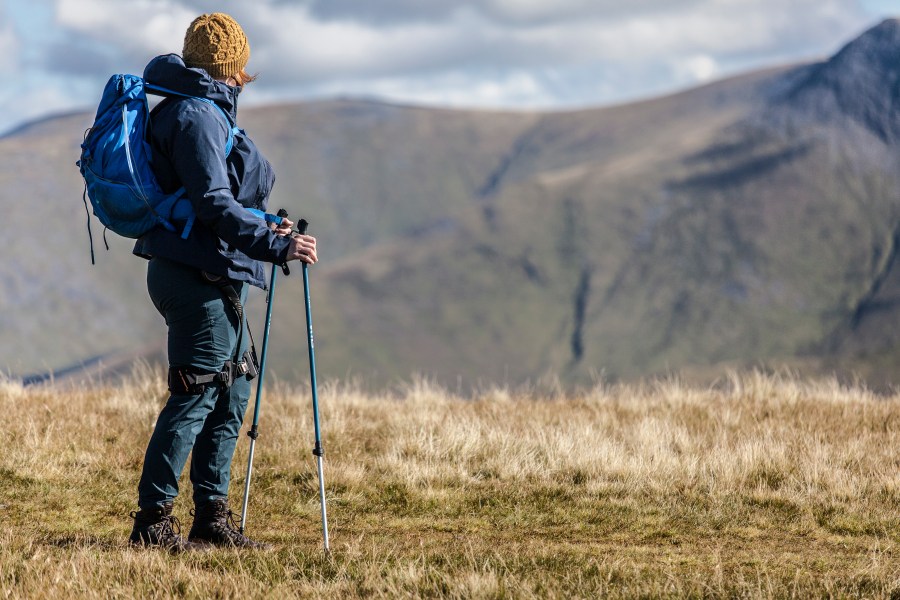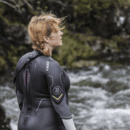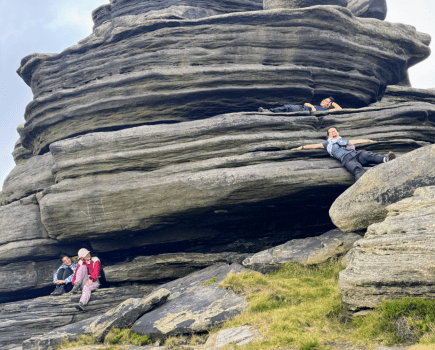If you’re an older hiker or someone with limited mobility, the rise of AI exoskeletons may well already be on your radar. While they are not yet a common sight on the mountain, exoskeletons aimed at adventurers are now available to buy in Europe, and have been trialled on a wider scale in China.
Main image: Walking in Eryri with extra assistance from an AI exoskeleton | Credit: Gary Moore
I’ve been curious about exoskeletons from the get-go, despite my wider concerns about AI. I love to be outdoors in nature, but most hiking is a challenge for me. Thanks to early onset arthritis in my knees, probably brought on by my years as a child gymnast, my mobility is just not what it should be. At the age of 30 I had the first of several surgeries designed to stave off the need for a joint replacement. And they have helped delay the inevitable. But my left leg now no longer bends past 90 degrees, nor fully straightens, which means it’s hard to build muscle effectively in that leg. I can’t run at all, and in winter my knee often seizes without warning. With that lack of mobility has come unwanted weight gain as well. It’s been a bit of a spiral in recent years, and is a limitation that I struggle with both physically and mentally.
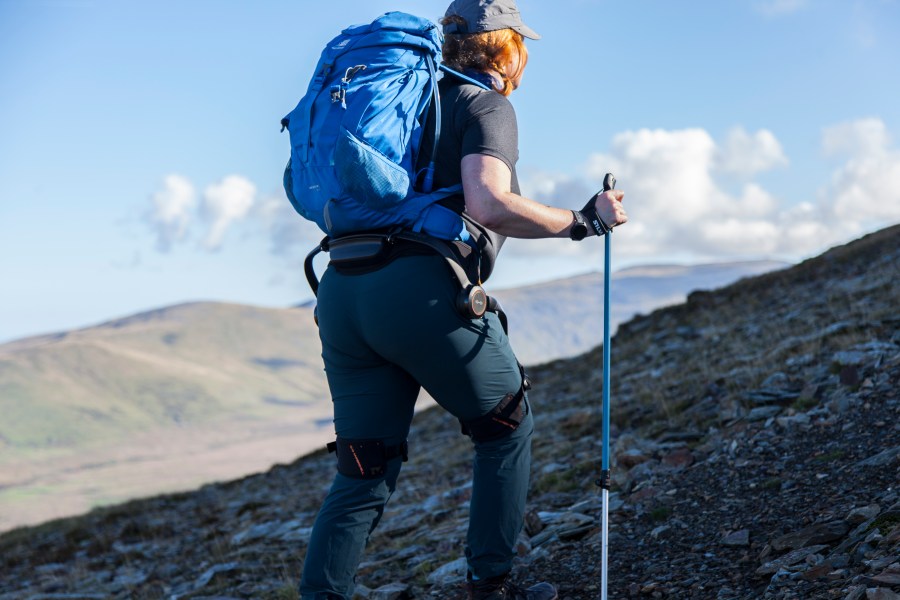
Of course, I’m not alone. In the UK some 24% of all people have a physical disability, rising to 45% of pensioners. With such a large proportion of the population potentially struggling with activities that others take for granted, it’s no wonder that the recent development of AI exoskeletons has captured people’s imaginations, including mine.
Premium outdoor brand Arc’teryx is still only accepting pre-orders for its $4,999 MO/GO exoskeleton, but Chinese startup Hypershell has already launched into the UK market, with the basic Hypershell exoskeleton starting at £789.
So when Hypershell offered me the chance to try one for myself in Eryri/Snowdonia, I jumped at the chance (not literally, as of course my surgeon has banned me from jumping!).
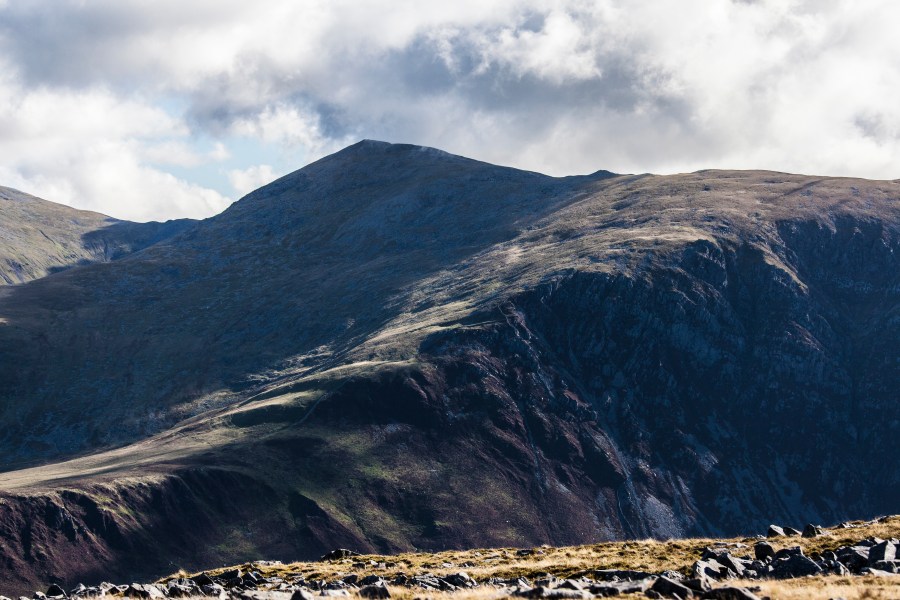
The idea was to hike part of the Y Glyderau section of the Welsh 3000s, summiting Y Garn and then Glyder Fawr. At 16km of trekking and 1,378m of elevation, this wasn’t a small undertaking, but if I was ever going to complete a hike like this, it was going to be with some help. I figured I had nothing to lose. On the day I set off, alongside a veritable pack of other outdoor writers and photographers who’d also been invited to trial the new tech, the sun had unusually decided to show its face, a rare occurrence, as any regular in Eryri National Park will know. It felt like a good omen.
We’d been fitted for our exoskeletons the evening before, and shown how they work. Our top of the range model, the Hypershell X Ultra, has four modes – transparent (which does nothing), eco (a little bit of assistance), hyper (max assistance) and fitness, which provides extra resistance, and I suspect would be a useful tool for athletes undertaking altitude training. All the modes apart from transparent have multiple adjustment levels, and the whole machine is powered by a battery designed to withstand extreme environments, that charges quickly from a USB-C cable.
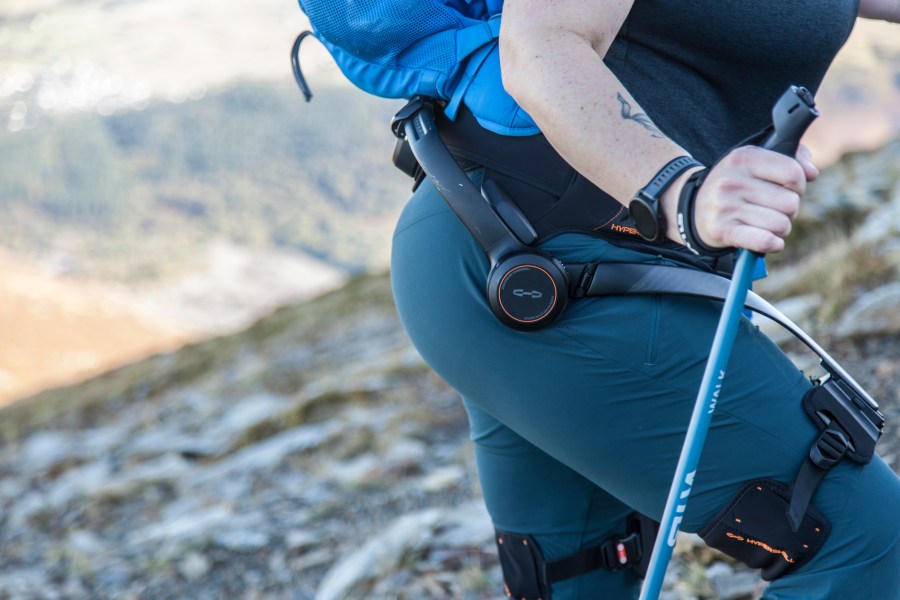
You strap the exoskeleton around your hips and upper thighs, and then the AI gives you extra assistance, pulling your leg up for you and effectively reducing the amount of effort you are making for each step.
You can control the level of assistance by pushing a button on the device itself, or via an app on your phone, which allows you to fine tune the settings – I used mine to give extra power assist to my left leg compared to my right. The whole device weighs less than 2kg, and the battery can last for several hours, depending on the conditions.
So how did the exoskeleton actually perform on the mountain? Setting off up a gradual incline towards the base of Y Garn, I kept it in eco mode, knowing that there was a steeper elevation to come.
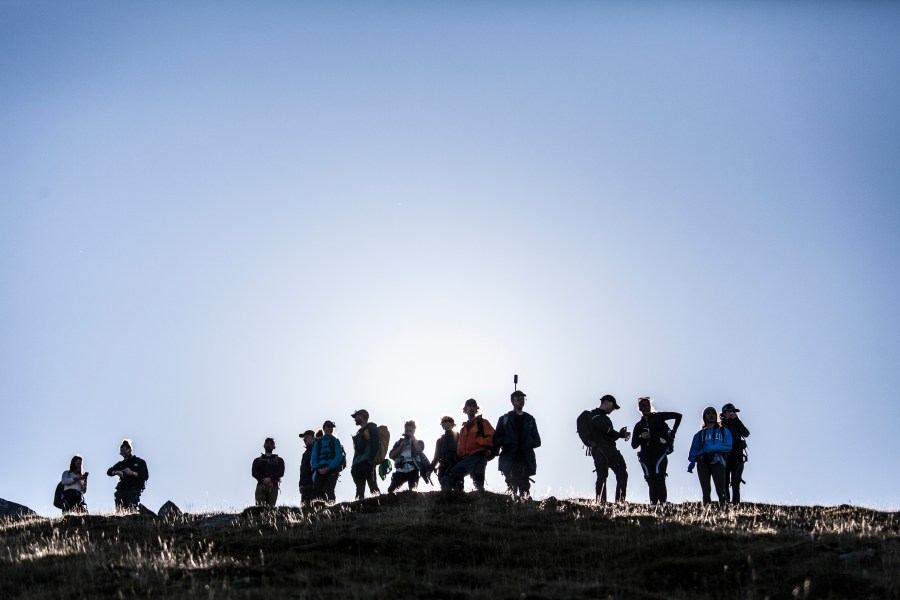
We were being led by guides from Raw Adventures, who had sensibly advised us to prepare for all weathers and bring plenty of water, so my pack wasn’t exactly light, but the extra assistance from the Hypershell helped me make relatively light work of the on-road climb.
I say relatively, because I am effectively walking around with a permanent injury, with no cartilage to speak of in either knee at all, and a completely unpredictable level of pain. Sometimes my knees hurt a little, sometimes they hurt a lot, but the only time they stop hurting is in very hot weather. So I was already feeling it a bit.
After a quick break for a snack bar, we took on the next section, a much steeper trail, with mostly grassy terrain. I switched the exoskeleton to hyper mode and gradually increased the assistance (there are five levels for each mode). I wasn’t moving fast, and as everyone else was also wearing an exoskeleton, I quickly fell to the back of the pack – not a great experience psychologically. But the tech was definitely helping and as we neared the summit of Y Garn I looked back and marvelled at how far we’d climbed. I knew there was no way I’d have reached this far this quickly without the extra help.
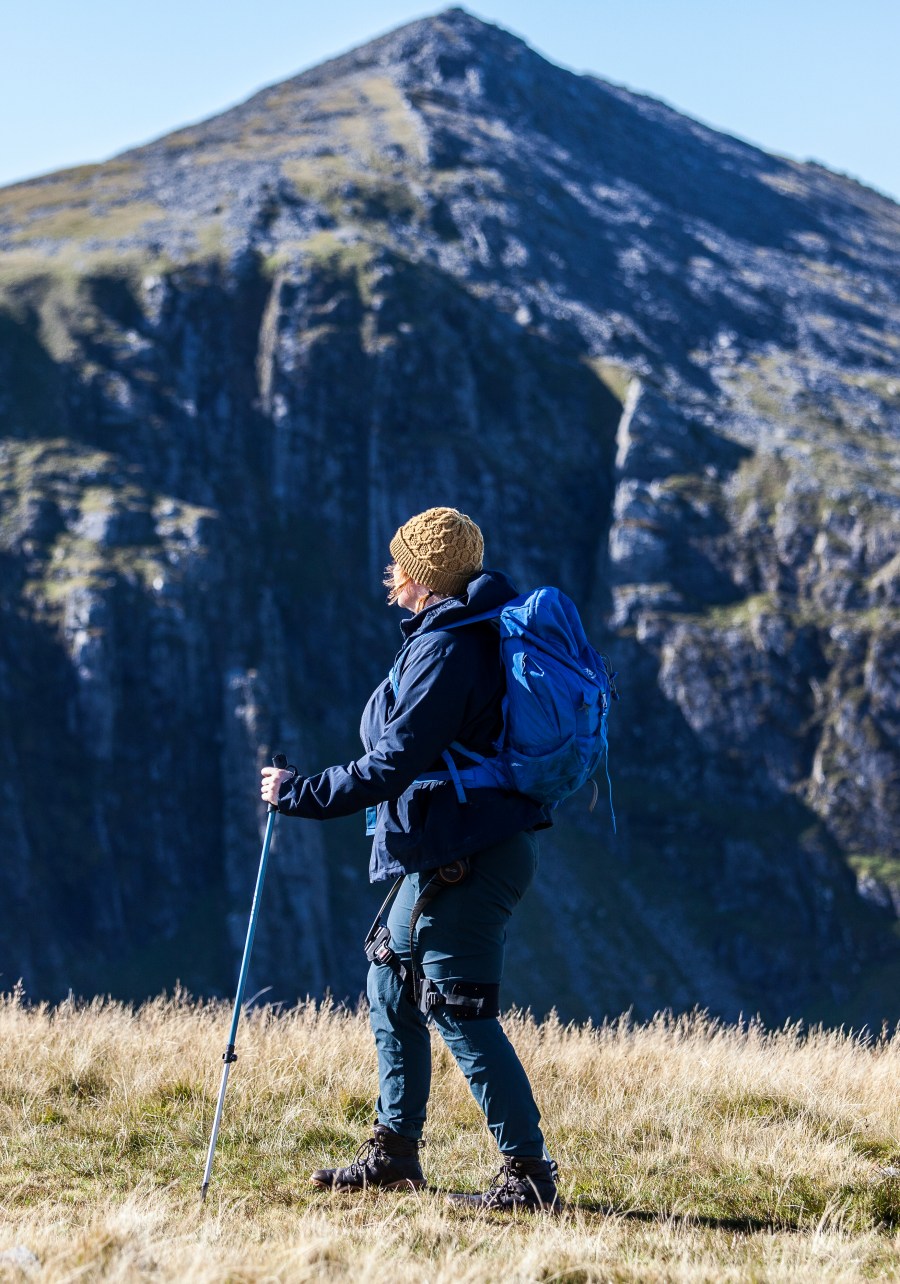
But this is when things started to get trickier. With a short boulder field to traverse, my usually helpful hiking poles were getting in the way, and I was worried about catching the exoskeleton and damaging it. The Hypershell tech works by learning how you walk, and then picking up your leg very slightly when it predicts you will take a stride. But scrambling through the boulder field meant there was no regular stride pattern to predict. I couldn’t work out whether it was helping or hindering me.
I was delighted to reach the top of Y Garn, with the sun still blazing down on us. It was a rare day on the mountain. But I also knew by now that the full hike was going to be beyond me. I’d started to experience stabbing pains in my left thigh – something that sometimes happens when I really exert myself, and there was twice as much climbing still to go. So I resolved to get to the bottom of the next descent and peel off back to the meet point, with some other hikers in the group who were also ready to call it quits.
Walking down Y Garn with my endlessly patient and kind guide Erin, I realised that, while the exoskeleton might be able to help me with climbing and reducing energy spent – the Hypershell’s makers claim it reduces exertion for hikers by 39 per cent – it wasn’t making the descent any easier than I’d normally expect. The limited range of movement in my left knee was starting to become a problem, and the Hypershell just wasn’t designed to help with that.
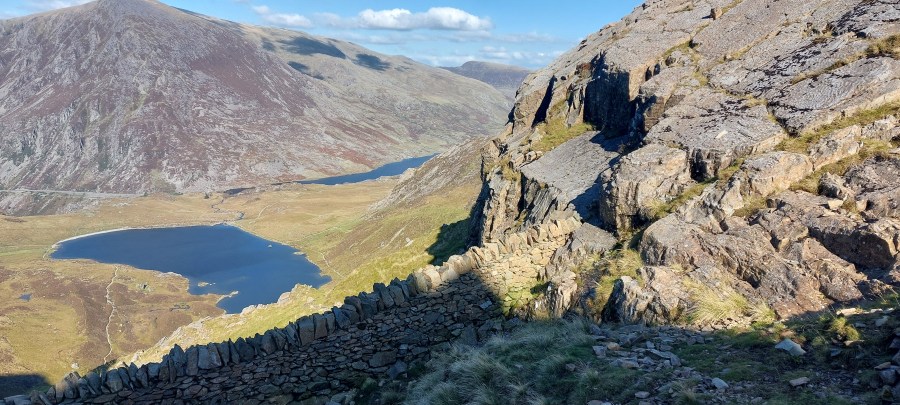
We scrambled down through Devil’s Kitchen – a steep gash of boulders that cut into the mountain to form natural, if highly uneven steps. Hikers passed me and the familiar sinking feeling I so often experience when trying to keep up with fully able bodied people started to hit. This wasn’t fun any more, and I kept bashing the Hypershell’s frame on the rocks. By the time we finally made it back to the meet point I was shattered, and very demoralised. The tech I’d hoped would solve all my problems just wasn’t enough to overcome my disability.
I actually feel bad writing this. Because, having talked directly to its makers, I know that the team behind Hypershell really do want to help people. Their mission isn’t to create a new breed of superhuman, super-fast hikers, runners and cyclists, but rather to help people extend their activity levels and access adventures they might otherwise not be able to enjoy. And I can see that if your issue is simply fatigue then it really would be a problem solver.
For less technical adventures, I would still welcome the chance to use a Hypershell exoskeleton. It would definitely make long walks more manageable and it initially instilled a level of confidence in me I hadn’t experienced for a long time. But if you have limited mobility, particularly around range of movement, then just don’t expect it to work miracles.
Writer Rosee Woodland and photographer Gary Moore stayed at the Celtic Royal Hotel in Caernarfon as a guest of Hypershell, with guiding provided by Raw Adventures. Neither company had any editorial input into this article.

